Childhood 1912-1930
A village childhood Li Qun’s roots trace back to a quaint mountain village, an enclave characterised by a mere six
In August 1945, following the Japanese surrender, Li Qun bid farewell to Yan’an, where he had dedicated six years of work and life. He arrived in Xing County, Shanxi Province, which served as the political and cultural hub of the Shanxi-Suiyuan Border Region. There, he assumed the role of chief editor at Sui People’s Pictorial.
Post the Yan’an Forum on Literature and Art, he ardently embraced Chairman Mao’s guidance, immersing himself in grassroots engagement and aligning with workers, peasants, and soldiers. His keen interest was in promoting art for the rural masses. Now, with a broader perspective, he ventured into Shanxi and Suizhou, quickly immersing himself in the vibrant life of the newly liberated areas like Lingshi, Xiaoyi, and Fenyang in central Shanxi. He seamlessly connected with grassroots cadres and farmers, subsequently spending an extended period in Nao County in northern Shanxi (present-day Land reform in Yuanping City). This phase refined his political ideology, enriched his experiences, and fortified him for more impactful future endeavours. His future work involved efficient collaboration with the prevailing situation, serving the central cause, advocating for the masses, popularising Chinese New Year pictures, and enhancing work efficiency. He received substantial leadership recognition, garnered public acclaim, and produced notable woodcut works such as “Paying homage to Comrade Guan Xiangying“, “Portrait of Commander-in-Chief Zhu” “Portrait of Comrade He Long” “Portrait of Stalin” “Giving Horses“, “Wang Gui and Li Xiangxiang” illustrations, and New Year pictures including “Election Picture” and “Making Military Shoes”. He also collaborated with rural women on paper-cut art titled “Weaving“.
Additionally, to broaden his understanding of life and enhance his creative prowess, during the later stages of land reform, he achieved the short-term goal of completing 100 portrait sketches according to the established plan. In his spare time, he contributed commentaries such as The Rhymes of Li Youcai by Zhao Shuli.
Similar to Qiaoergou, where Yan’an’s “Lu Yi” was situated, Gaojia Village in Xing County, the location of the Jinsui People’s Pictorial Agency, held significant resonance during the war years, leaving an indelible mark on Li Qun’s life.
In July 1949, prior to the establishment of the People’s Republic of China, the inaugural national literary congress took place in Beijing. As a member of the northwest delegation, Li Qun actively participated and was elected as a presidium member and a member of the China Federation of Literary and Art Circles. Subsequently, he attended the founding meeting of the All-China Artists Association, securing the position of executive director of the National Council.
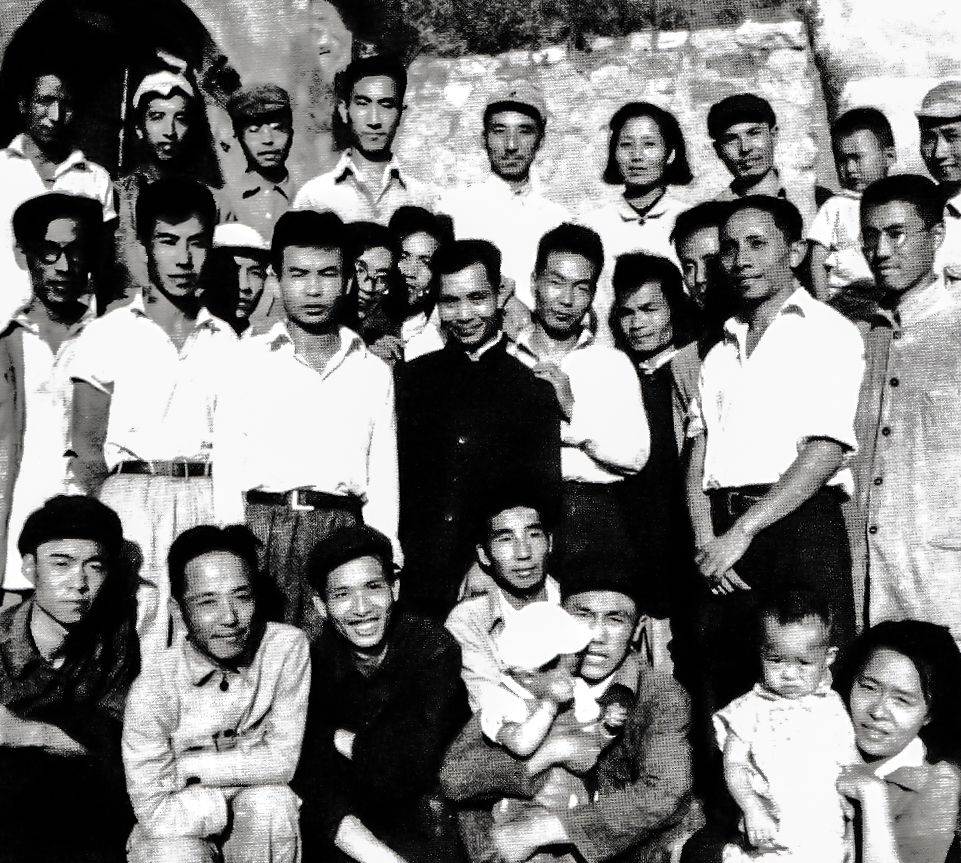
The photograph captures Gaojia Village, Yuxing County, with figures like Hu Zheng and Xirong in the middle row, alongside the statue of Comrade Long. Li Qun, in this snapshot, joins comrades from the Jinsui press literary and art circles. During this period, he crafted significant woodcuts such as “Paying homage to Comrade Guan Xiangying” and “Portrait of Commander-in-Chief Zhu“. Additionally, he collaborated with women, including Shi Guiying, on the paper-cut “Weaving“. Upon his return to Xingxian County, he assumed the role of deputy director of Jinsui County.
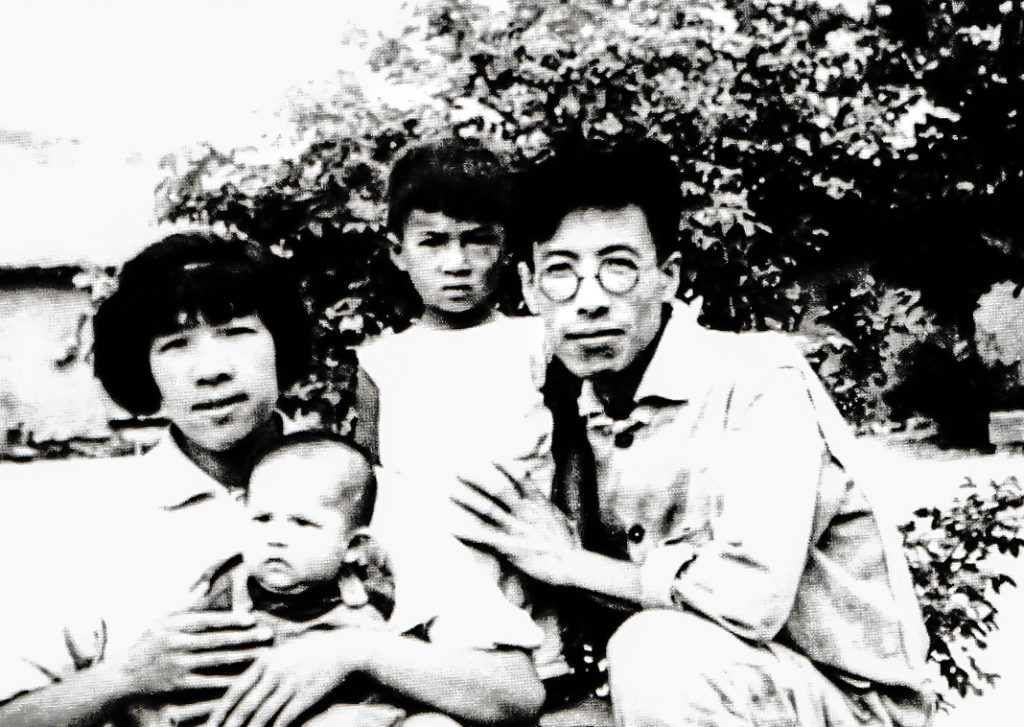
In 1946, Li Qun, accompanied by his wife and their eldest son A Ming, as well as their third son A Qiang, left indelible footprints in Xing County, Shanxi Province.
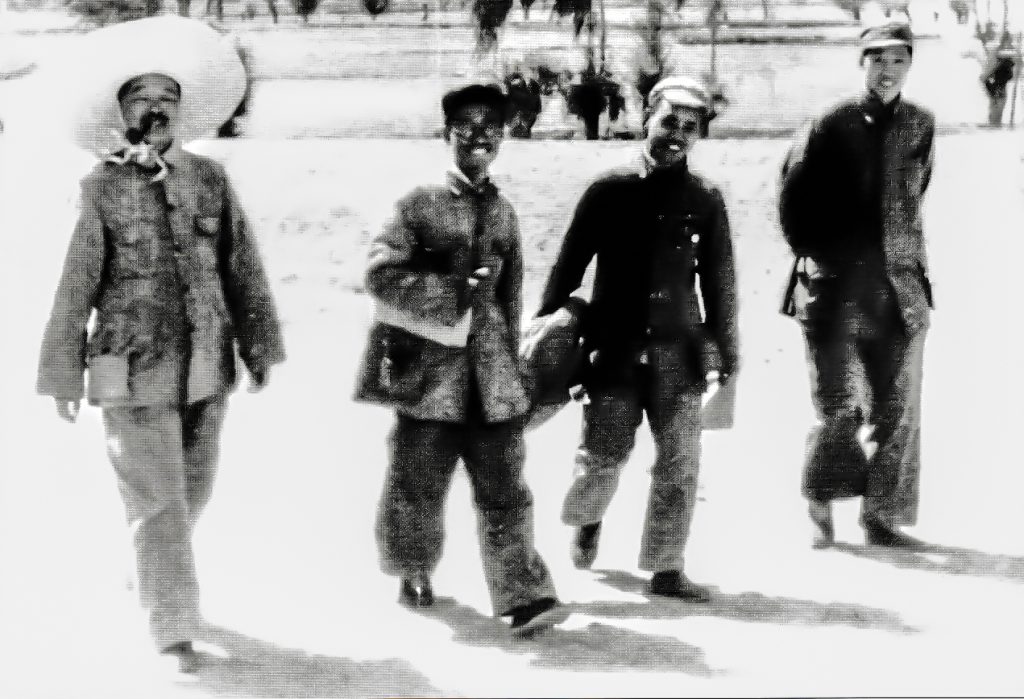
In 1947, alongside Marshal He Long (first from the left), Li Qun (second from the left) embarked on a journey to Caijiaya in Xing County.
Accompanied by Marshal He Long, a prominent military leader of the Communist Party of China. This journey held profound symbolic and strategic importance during the Chinese Civil War. At that time, He Long, as a key figure in the Red Army, was actively engaged in coordinating military and political efforts to strengthen the Communist forces against the Nationalist troops.
Li Qun, a respected artist known for his woodcut prints, was drawn to this historical moment, not just as an artist, but as a participant in the revolutionary effort. The trip to Caijiaya was more than just a physical journey—it was a deeply symbolic act of solidarity with the Communist cause. Li Qun’s presence on this mission was a testament to the role that artists played in the revolution, supporting the dissemination of revolutionary ideals and furthering the unity between the military and the cultural front.
By accompanying He Long, Li Qun not only had the opportunity to witness and document the resilience of the revolutionary forces but also to capture the spirit of the time in his artwork. This journey reinforced the intertwining of art and politics, with Li Qun’s work becoming an integral part of the movement, reflecting both the struggles and triumphs of the era. Through his artwork, Li Qun continued to contribute to the revolution, using his craft to document and communicate the vision and ideals of the Communist Party.
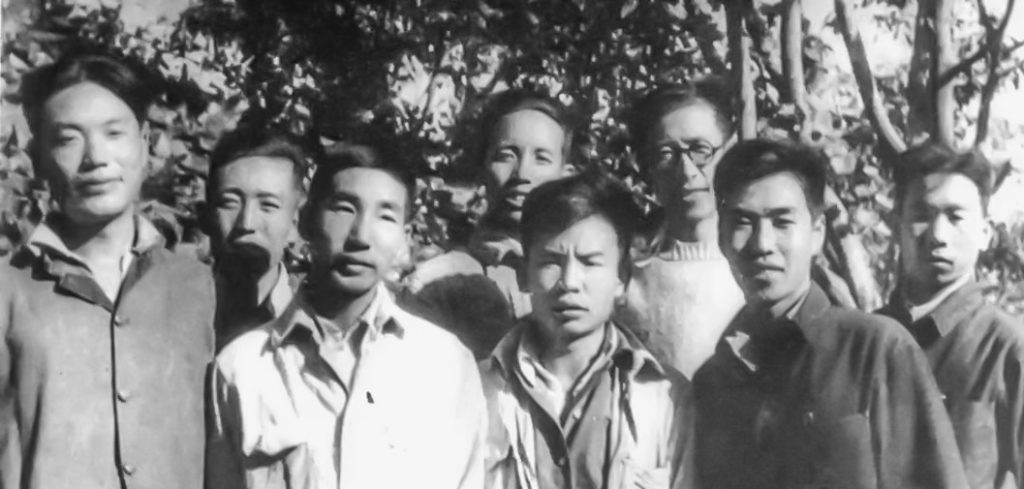
Positioned at the back right, he is joined by Feng Shuwei, Su Guang, Xirong, Hu Zheng, and Li Shaoyan in a group photo taken in Gaojia Village, Xing County. Niu Wen, seen on the left in the picture, was among the literary and art workers who participated. The image captures the camaraderie of the group, showcasing their shared commitment to publications like “Niu Wen and Masui Daily”, “Jinsui Dazhong Daily” and “Jinsui People’s Pictorial”.
In that autumn, Li Qun, along with his creation of woodcuts like “Election Picture” and “Making Military Shoes” also penned “Three Talks” (Li You). Notably, he crafted the woodcut “Giving Horses” and contributed illustrations and New Year pictures, leaving an enduring mark in 1948. In 2008, after his involvement in the land reform in Nao County, Li Qun returned to Xingxian County.
In September 2008, the curator of this “Pictorial Biography” undertook a visit to Gaojia Village, Xing County, Shanxi, the former site of the Shanxi-Sui Federation of Literary and Art Circles and “Jin-Sui People’s Pictorial”. Bai Zhenfa, aged 73, and local officials guided us through the remnants that have transitioned into historical artefacts. The ruins of cave dwellings and courtyards (Right Photos) bear witness to stories known to those who lived there. In the courtyard from Bai Zhenfa’s childhood (Left Photo), cave dwellings stands where staff from the “Jinsui People’s Pictorial” and “Jinsui Daily” once resided. Bai Zhenfa shared that he had witnessed the development of this very space.
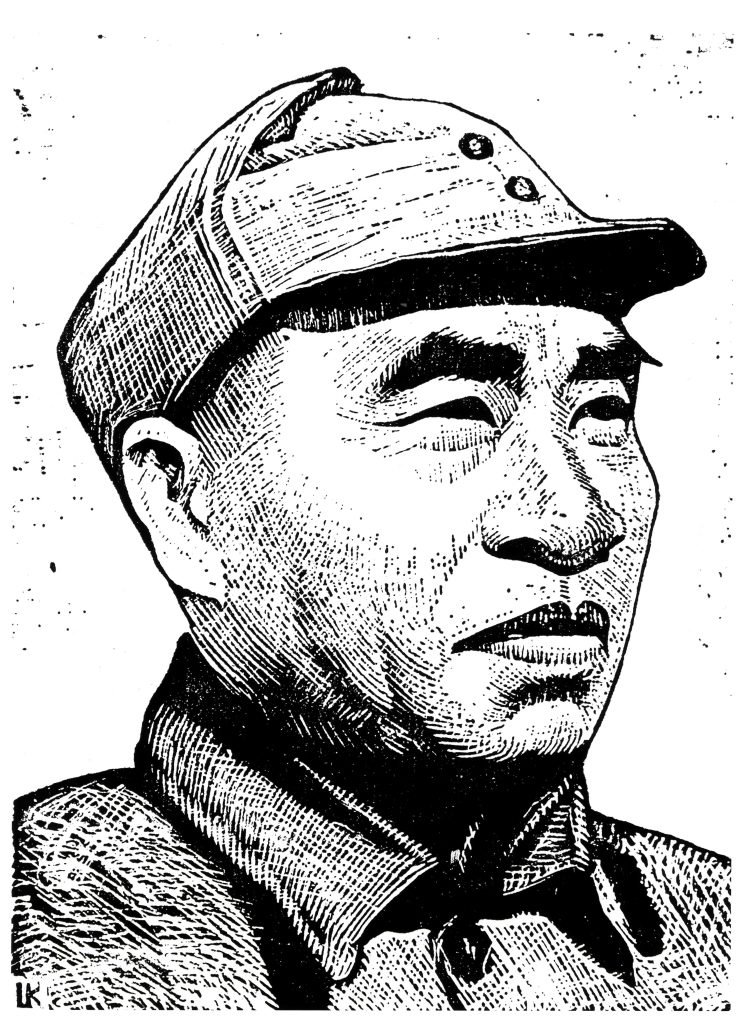
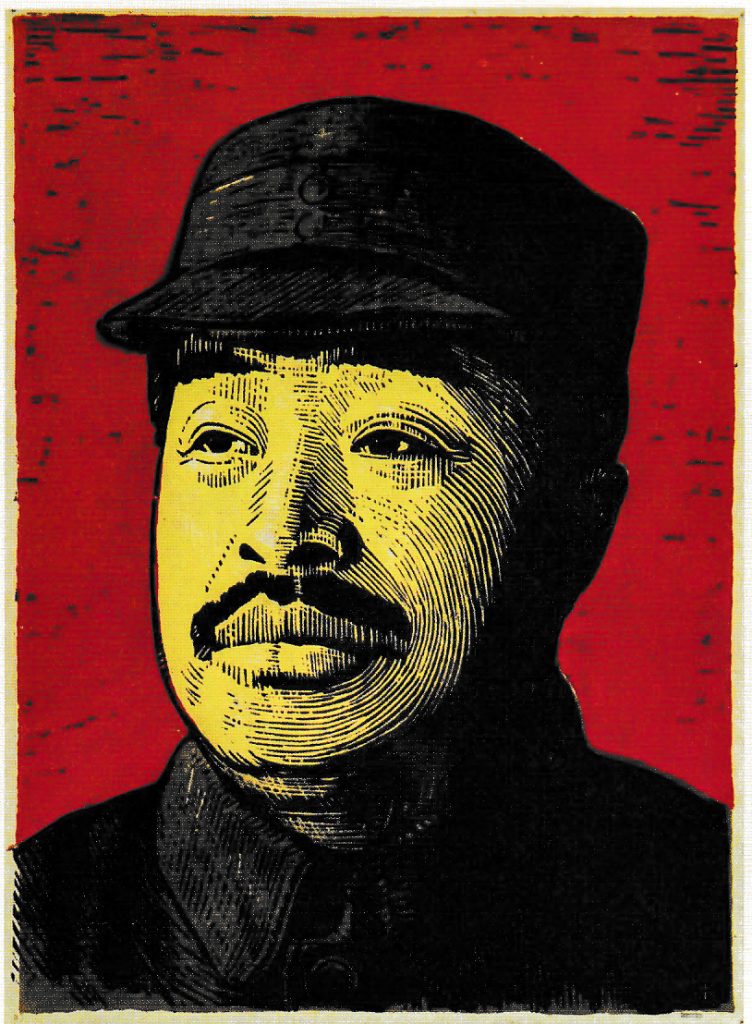
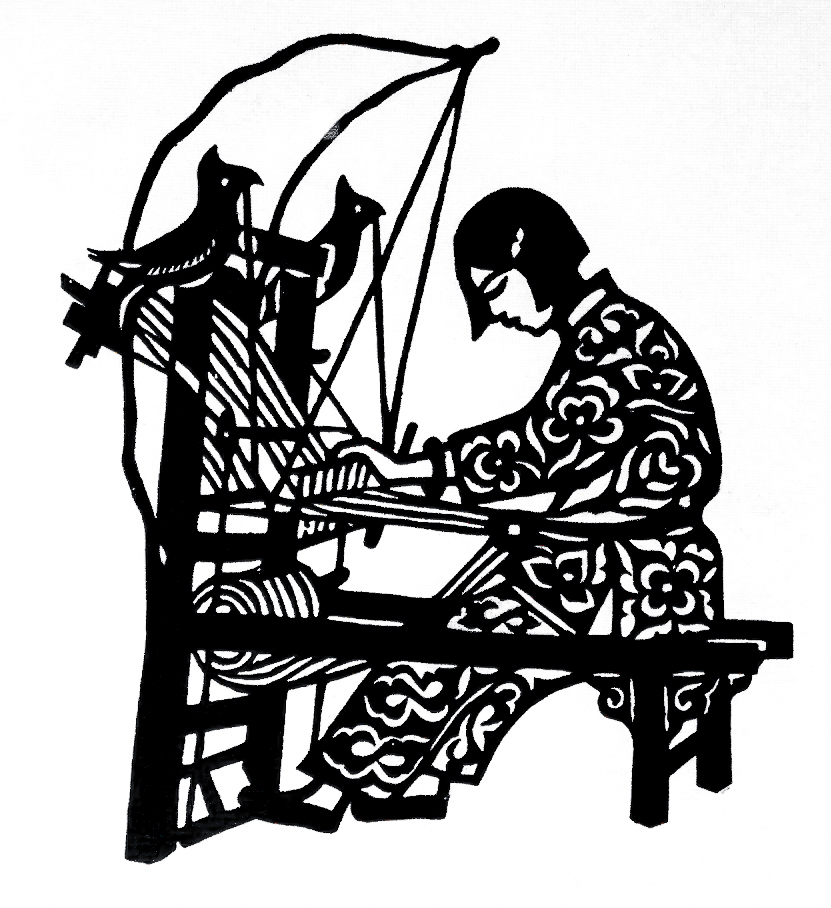
In 1946, during Li Qun’s rural sojourn in Xiaoyi County, he encountered Shi Guiying, an expert in textiles and paper-cutting, in Dongxiaojing Village. Li Qun provided an outline of a weaving pattern and enlisted Shi Guiying’s expertise to transform it into window grilles. While respecting the original design, Shi Guiying enhanced the overall composition and decorative elements. For instance, by adjusting the perspective, she revealed both legs, lending greater beauty to the image. The intricate details on the clothing and hairpins reflected a keen sense of personality, capturing the essence of life and artistic flair. This collaborative paper-cut, titled “Weaving” holds a special place for Li Qun, serving as a cherished memento of his initial experiences in the newly liberated areas and a delightful memory of his collaborative ventures over the years.
For reasons unknown, “Weaving” was later featured in a “Chinese Print Collection” published in Germany alongside Chinese woodcuts. While Shi Guiying may not have been aware of this international recognition, her name resonates with Chinese and foreign admirers.
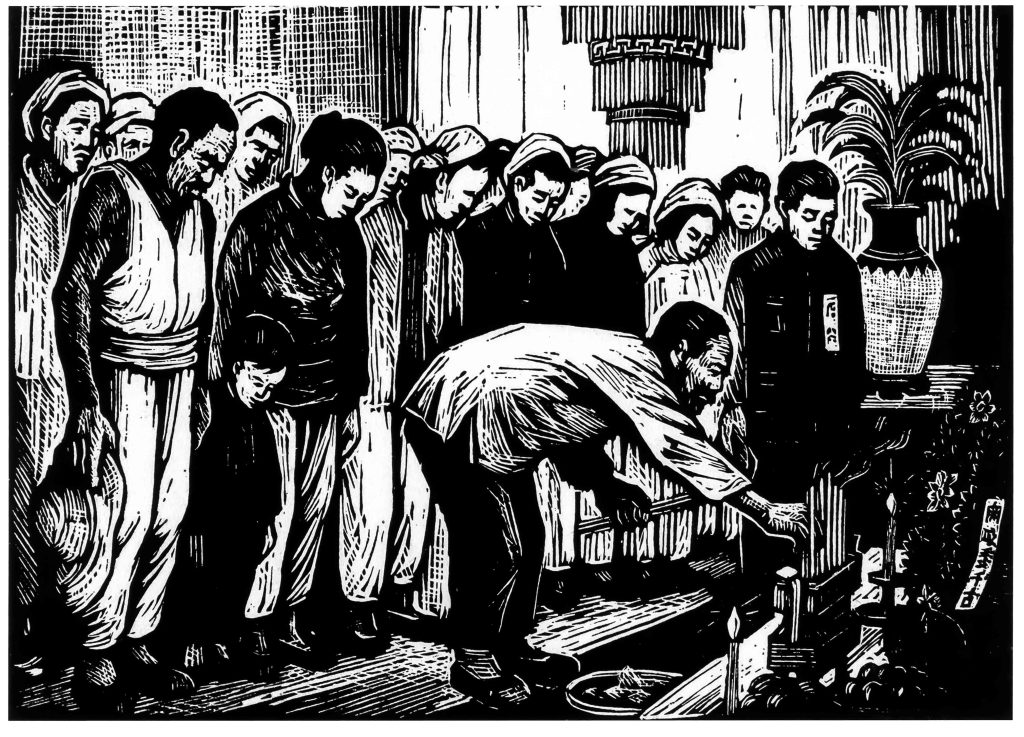
Comrade Guan Xiangying, hailing from Dalian City, Liaoning Province, was a Red Army veteran who served as the political commissar of the 120th Division of the Eighth Route Army and secretary of the Shanxi-Sui Branch of the CPC Central Committee. Following his demise due to illness in Yan’an in 1946, the military and civilians of the Shanxi-Suiyuan Border Region organised a grand public memorial ceremony in his honour. Li Qun actively participated in this public tribute and crafted the woodcut, “Paying homage to Comrade Guan Xiangying” as a commemorative piece.
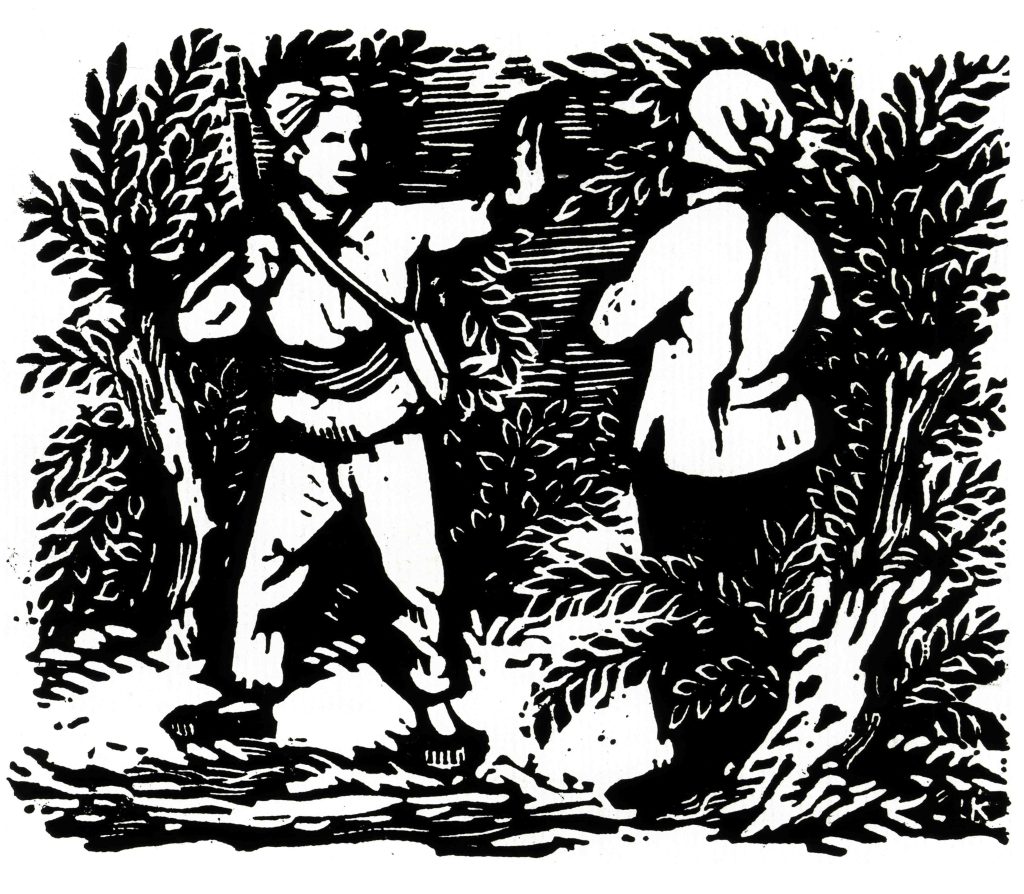
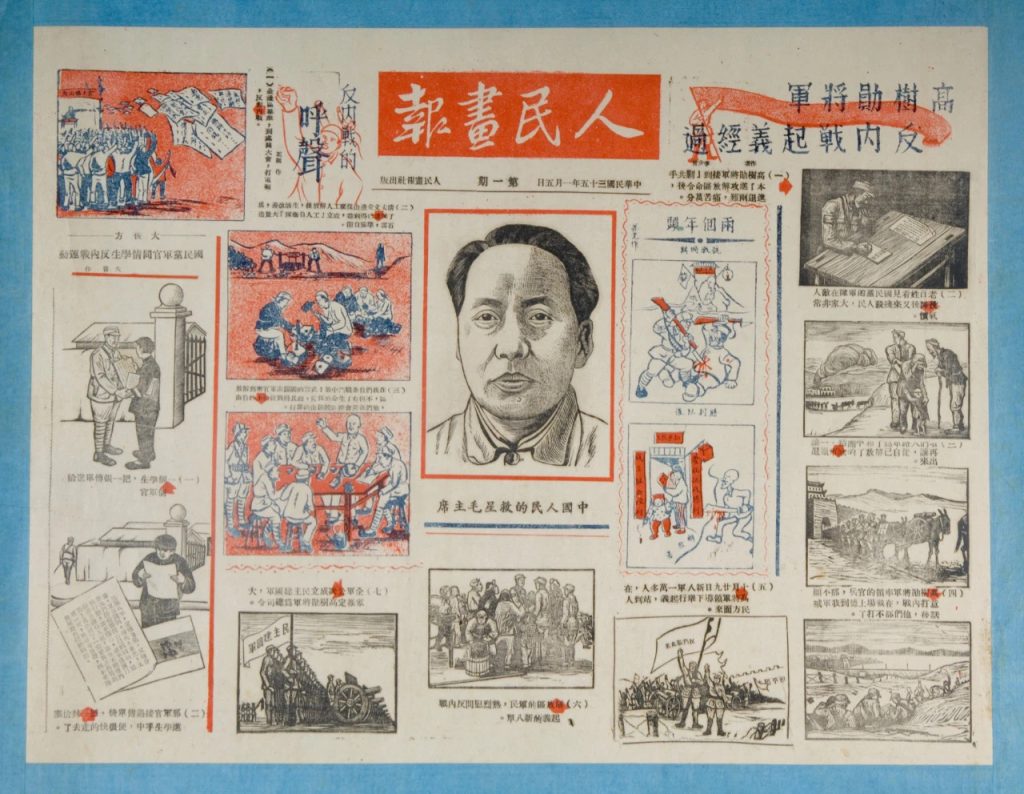
The content of the pictorial primarily consisted of serialised comics because comics can illustrate the process of development, serving as the most effective artistic form to promote the party’s policies and educate the masses through storytelling. Initially published twice a month with a print run of three thousand copies per month, the pictorial gained popularity among farmers. Before its discontinuation, each issue increased to four thousand copies, and Li Qun considered this a meaningful endeavour. Due to staffing constraints related to land reform work, “Jin Sui People’s Pictorial” ceased publication in May 1947. From its founding in January 1946 to its discontinuation in May 1947, a total of 32 issues were published. Although the pictorial existed for only a year and four months, its impact and influence were significant. It was a testament of Li Qun and his comrades, providing accountability to the people and showcasing their brilliance in just over a year.
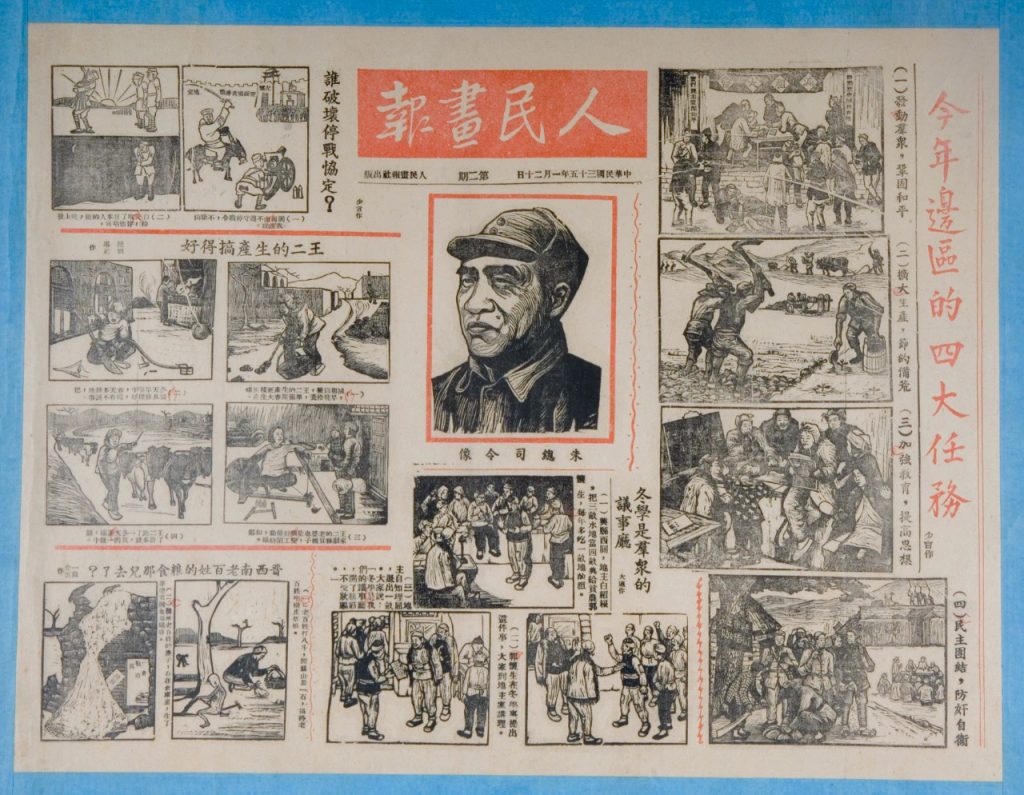
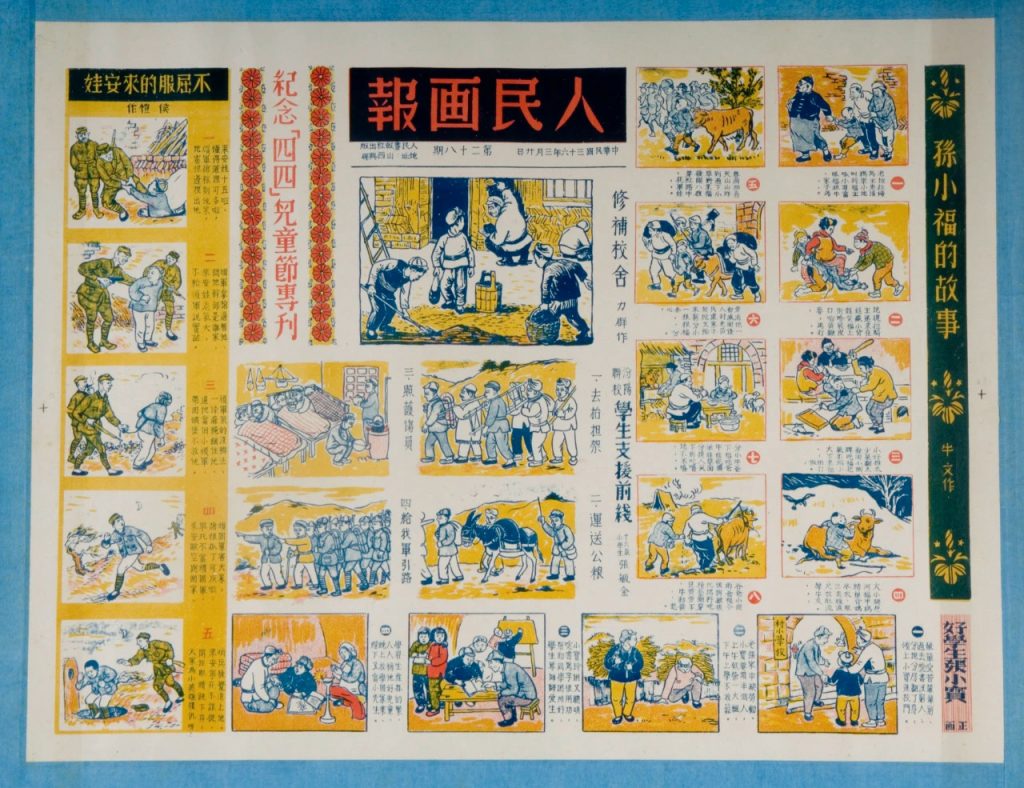
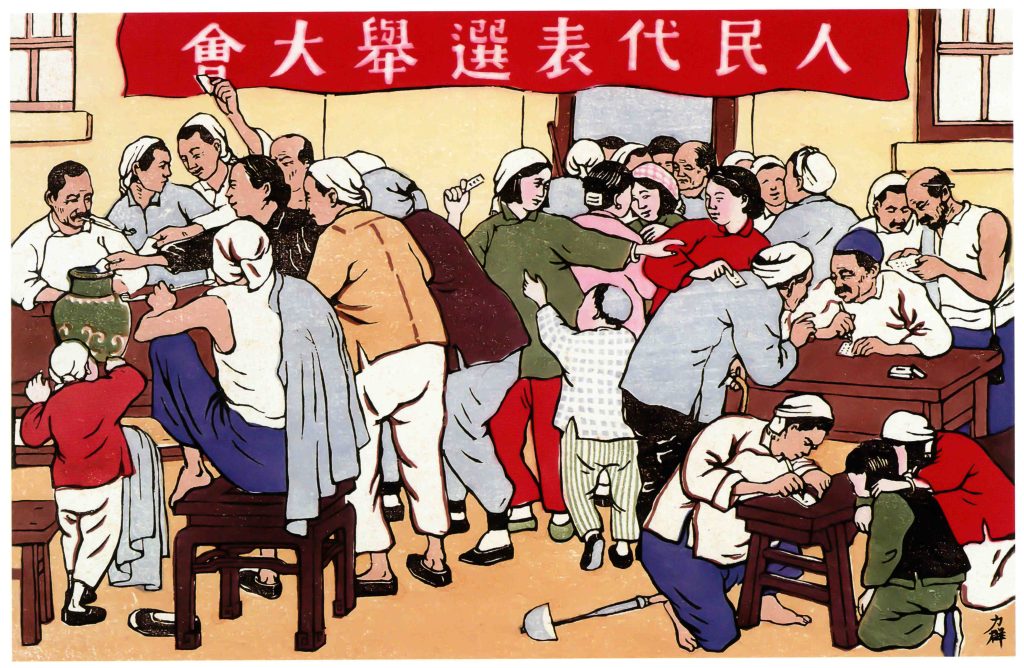
Representing the will of the people, Li Qun actively participated in the land reform movement in Chu County (now Yuanping City) within the Shanxi-Sui Border Region in 1947. Upon returning to Xing County, he crafted the “People’s Representatives Election” in 1948, featuring characters who played a role in the “Land Reform” in Guo County, reflecting the involvement of the masses. Following lithography, the artwork was published in the supplement of “Tianjin Daily” and received acclaim from a female painter at the Central Academy of Fine Arts. During the twelfth lunar month of that year, Li Qun set up a street stall in Renyi Ancient Town during the Spring Festival, selling the “People’s Representatives Election” picture to gauge the reception among the masses. The overwhelming success, with all the New Year pictures selling out, reaffirmed the deep appreciation of farmers for his works and bolstered his determination to engage with rural communities.
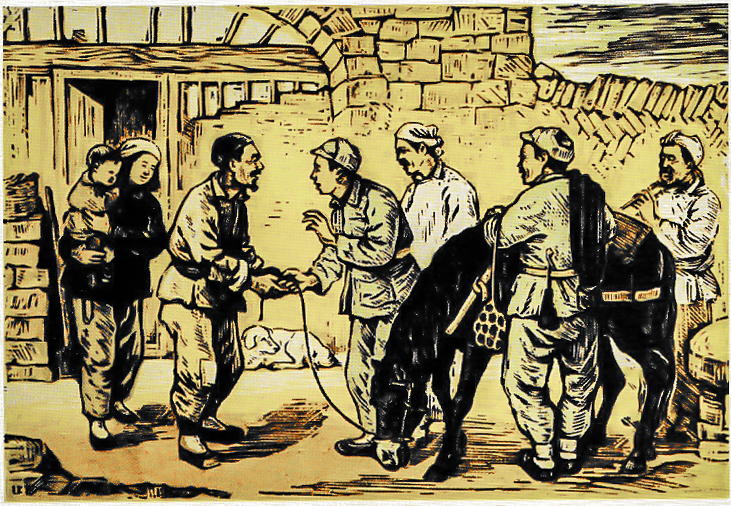
Woodcut “Giving Horses” created in 1948, addressed Commander He Long‘s call to donate surplus horses to poor military martyrs. This initiative aimed to help them overcome production challenges. Initially, the woodcut depicted an elderly individual, prompting criticisms from painters Niu Wen and Su Guang for its portrayal. Acknowledging the validity of the critique, Li Qun later re-engraved the piece, emphasising the strength of the military martyrs, earning widespread praise.
During the inaugural National Literary Congress in 1949, “Giving Horses” featured in the first National Art Exhibition. Subsequently, it was selected for inclusion in the “New China Print Collection” published by Shanghai Chenguang Publishing Company.
A village childhood Li Qun’s roots trace back to a quaint mountain village, an enclave characterised by a mere six
A fervent and spirited young man, deeply moved by the news of the “September 18th” incident, found himself compelled to
Following the Marco Polo Bridge Incident on July 7th, a significant event unfolded in Shanghai known as the “August 13th”
In Li Qun’s contemplation, Yan’an had long been the revered sanctuary he ardently sought. Communist Party members and numerous progressives
In August 1945, following the Japanese surrender, Liqun bid farewell to Yan’an, where he had dedicated six years of work
Following the inaugural national literary congress, Li Qun adhered to Comrade Zhou Yang’s directives and returned to Shanxi to collaboratively
During the tumultuous period of the “Cultural Revolution,” Li Qun, like many writers and artists, faced severe hardships and endured
With the demise of the “Gang of Four,” a wave of joy swept across China. Li Qun, like countless others,
Determining precisely when Li Qun entered old age proves challenging, given the considerable gap between his vitality and chronological age.
In memory of Li Qun (1912-2012)
Our mission is to safeguard and champion Li Qun’s artistic legacy and literature for the benefit of future generations. This digital memorial stands as a tribute to Li Qun’s lifetime of artistic brilliance.
Our pledge is to meticulously document and categorise every piece of art created by Li Qun, creating a comprehensive resource for enthusiasts and scholars alike. Furthermore, we are committed to preserving his gallery, the Li Qun Art Gallery, and promoting Lingshi county, Taiyuan city and Shanxi province.
Delve into our extensive online catalogue, uncover the curated locations of Li Qun’s art, or visit the Li Qun Art Gallery located in the culturally rich Wang Jia Da Yuan. Set against the backdrop of the heritage-listed Wang’s Family Compound, a Qing Dynasty mansion, the gallery seamlessly blends art and tradition.
Explore the profound impact of Li Qun’s artistic journey, through both the visual realm and the literary dimensions of his work.
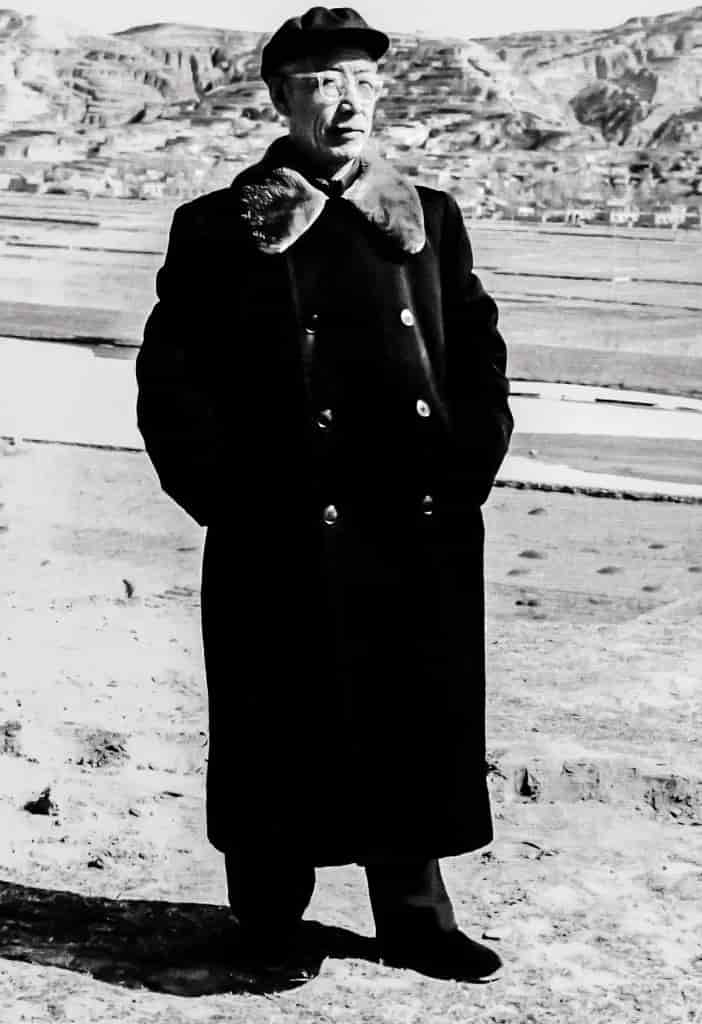
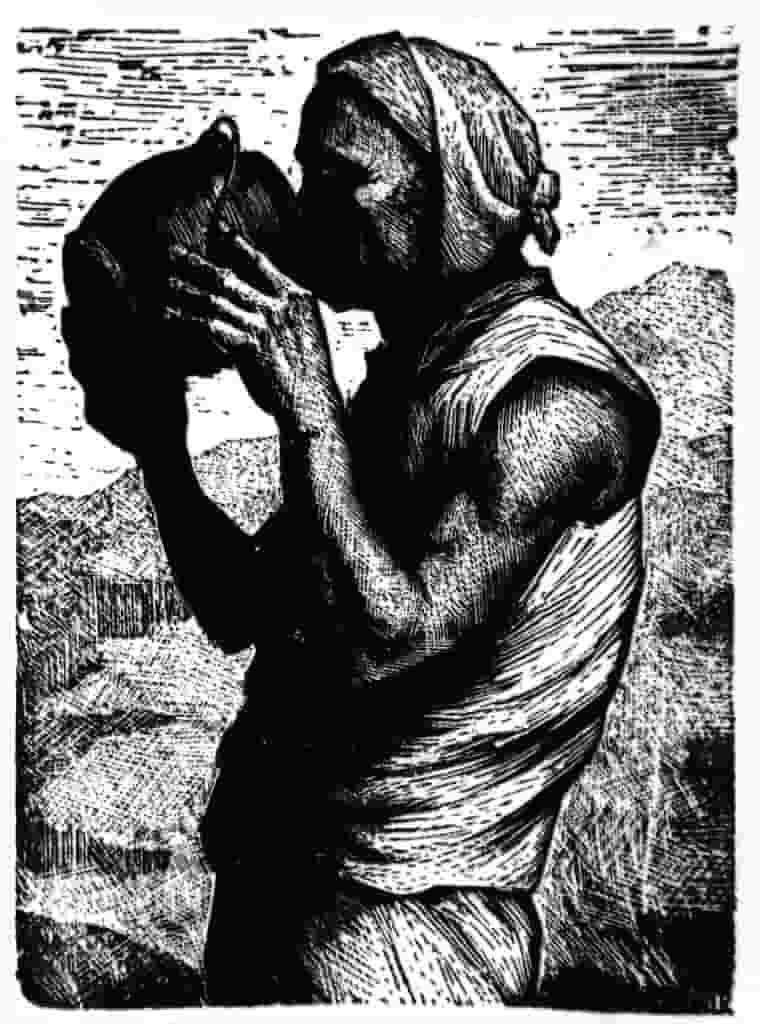

A village childhood Li Qun’s roots trace back to a quaint mountain village, an enclave characterised by a mere six courtyards and ten households in its nascent years. This hamlet, situated in Lingshi County, Shanxi Province, earned its identity as Hao Jia Zhang. Positioned to the east of Fenhe River,
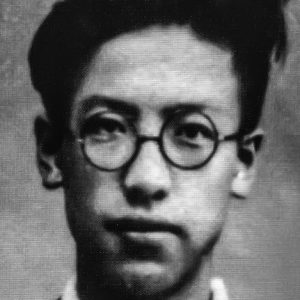
A fervent and spirited young man, deeply moved by the news of the “September 18th” incident, found himself compelled to resist the aggressive incursions of Japanese imperialism on Chinese soil. Unwilling to acquiesce to a policy of non-resistance before aggressors or to tolerate any actions undermining national prestige, the young
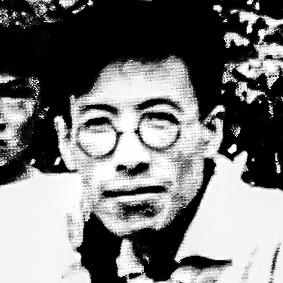
Following the Marco Polo Bridge Incident on July 7th, a significant event unfolded in Shanghai known as the “August 13th” Anti-Japanese War. It marked a critical juncture for the Chinese nation, prompting a collective response from those unwilling to endure subjugation. The call to action resonated with the spirit of
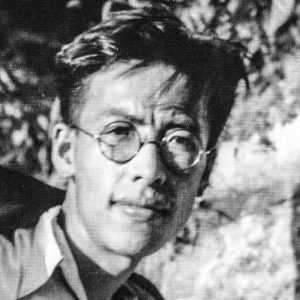
In Li Qun’s contemplation, Yan’an had long been the revered sanctuary he ardently sought. Communist Party members and numerous progressives within the “Wuhan Third Office” had already developed a certain level of “Yan’an Fever”. Although Li Qun was not yet a Communist Party member at that time, Guang Weiran had
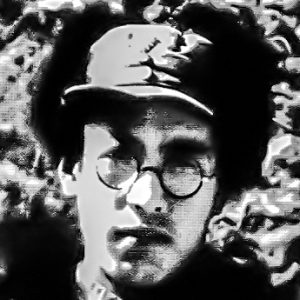
In August 1945, following the Japanese surrender, Liqun bid farewell to Yan’an, where he had dedicated six years of work and life. He arrived in Xingxian County, Shanxi Province, which served as the political and cultural hub of the Shanxi-Suiyuan Border Region. There, he assumed the role of chief editor
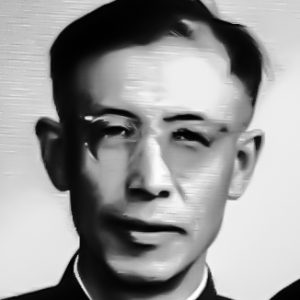
Following the inaugural national literary congress, Li Qun adhered to Comrade Zhou Yang’s directives and returned to Shanxi to collaboratively establish the Shanxi Federation of Literary and Art Circles with Comrade Gao Muhong. In December 1949, the first literary congress of Shanxi Province was successfully convened, electing Gao Muhong as
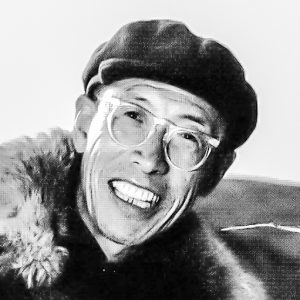
During the tumultuous period of the “Cultural Revolution,” Li Qun, like many writers and artists, faced severe hardships and endured humiliation. Initially transferred back to Shanxi in early 1966, the upheaval of the “Cultural Revolution” saw him forcefully returned to Beijing, labeled as part of the “gangster” team of “reactionary
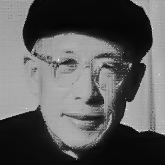
With the demise of the “Gang of Four,” a wave of joy swept across China. Li Qun, like countless others, found himself advancing into a new chapter in the aftermath of the storm, standing beside the “sinking boat” and the “ailing tree” during a time of tremendous possibilities.
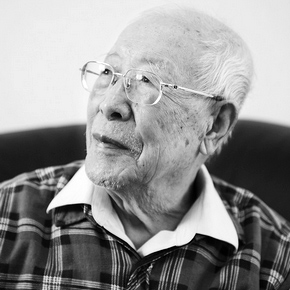
Determining precisely when Li Qun entered old age proves challenging, given the considerable gap between his vitality and chronological age. As mentioned earlier, even in his 70s during the reform and opening up era, he exhibited a spirit that belied his years. Approaching 80, on the cusp of the new
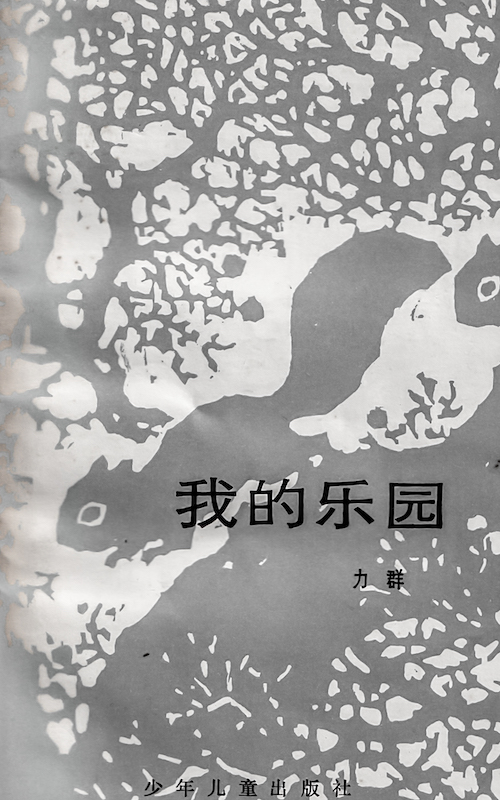
The pure and lively sensibilities of children, influenced by nature, the memorable and relatable people encountered during youth, and the longing of young minds for life and his emotional reflections. These themes permeate the work of the acclaimed woodcuts artist Li Qun. In this book, Li Qun skilfully intertwines literature
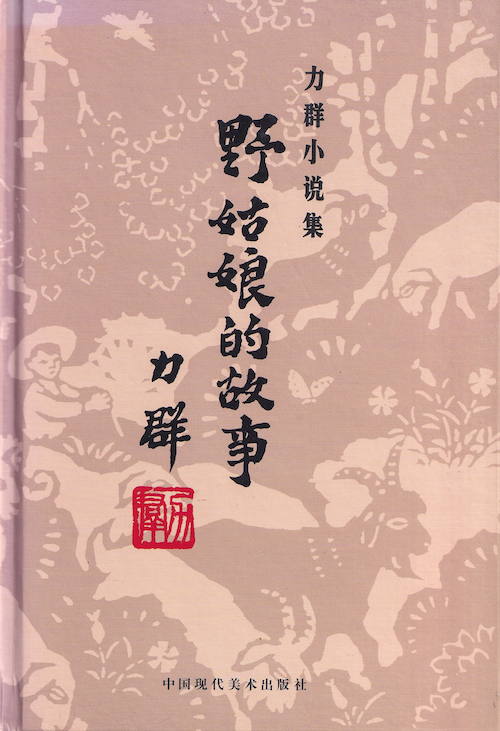
In the remote mountain village of Shanxi Province, Guilian grows up without her mother’s love, facing her father’s bitterness and the superstitions that label her unlucky. Despite harsh circumstances, she finds solace in nature and solitude. As she matures, Guilian’s resilience becomes her strength, defying her father’s attempts to sell
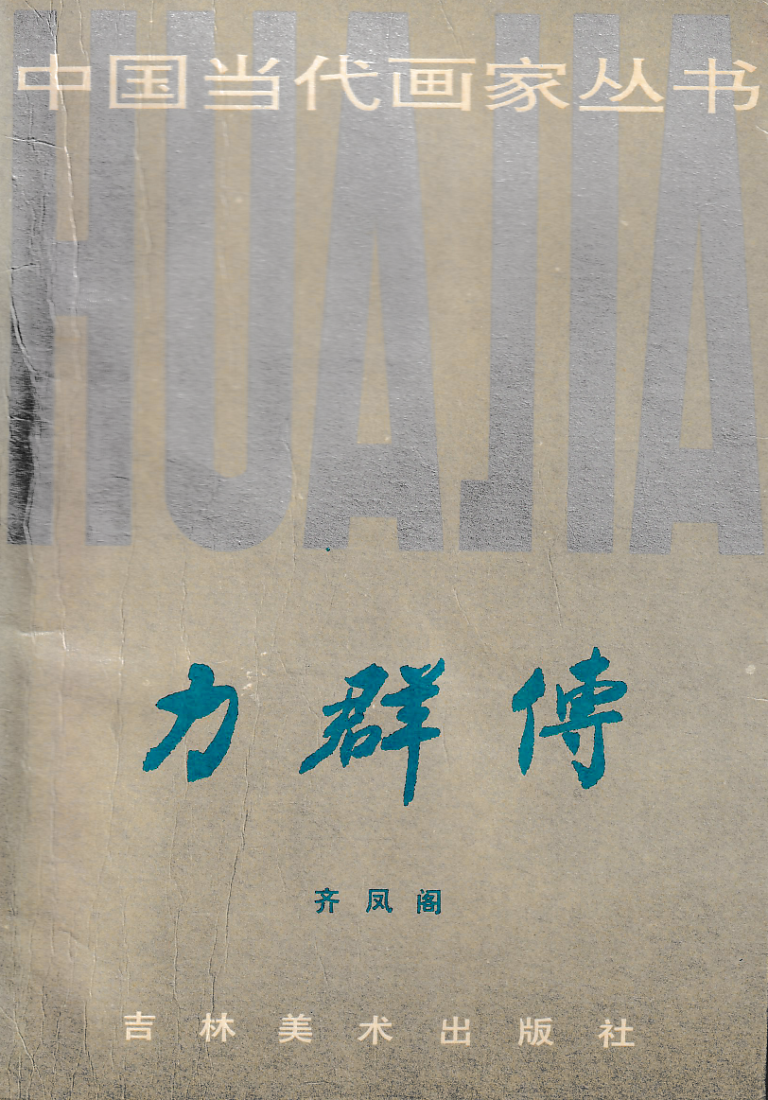
Li Qun the renowned woodcuts artist from Shanxi has weathered numerous challenges and remained committed to self-improvement, guided by unwavering beliefs and relentless determination. His journey from rural origins to urban landscapes, from the city to Yan’an, reflects his resilience and perseverance amidst life’s trials. This book not only chronicles

An autobiography penned by the renowned Chinese woodcuts artist Li Qun. Through a blend of documentary techniques, Li Qun vividly recounts the twists and turns of his career, tracing his creative journey and artistic evolution over the past century. This captivating autobiography immerses readers in the rich tapestry of historical
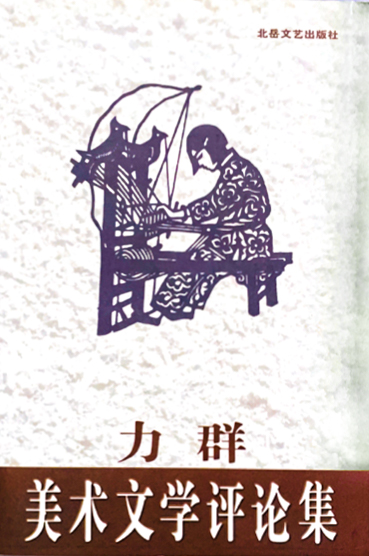
Li Qun renowned woodcuts artist who has been engaged in artistic creation for nearly 60 years. He persists in both printmaking and literary creation, and is also involved in Chinese painting. Additionally, he is a well-known art critic. His prints are characterised by their simplicity, clarity, and lyrical colours, reflecting
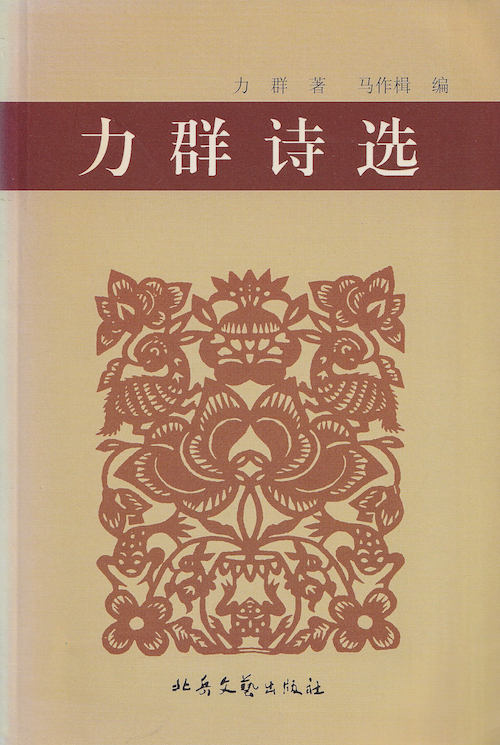
“Selected Poems of Li Qun,” compiled by the artist himself, finding its verses rich in sincerity, vivid imagery, and melodious rhythms. Divided into three volumes with a total of 88 poems, the collection showcases Li Qun’s deep emotions, artistic vision, and linguistic precision. Each poem resonates deeply, ranging from tranquil
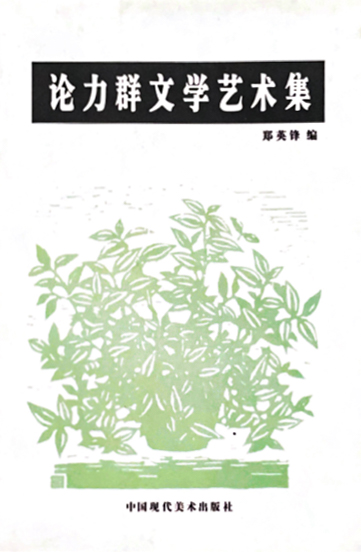
Li Qun, born on December 25, 1912, in Haogia Village, Shanxi Province, has been involved in art for nearly 60 years. He grew up in a rural environment, which greatly influenced his woodcut creations and writings. Li Qun studied at the National Hangzhou Art Specialized School and later joined the
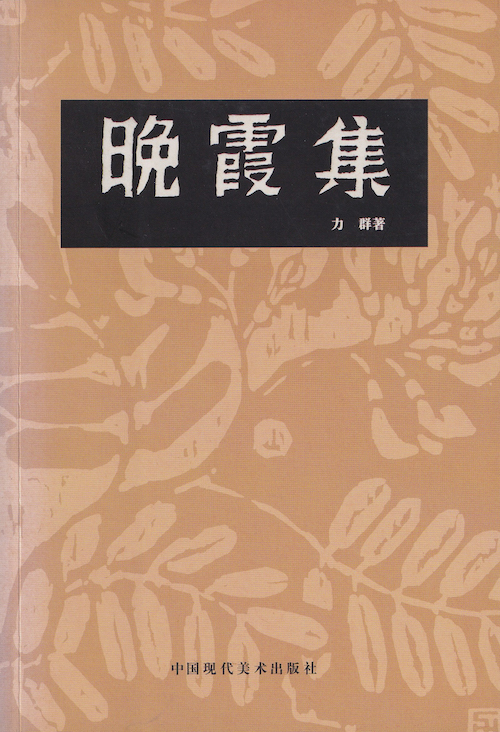
Li Qun, known primarily as a woodcuts artist showcases his literary talents alongside his passion for painting in an anthology spanning novels, essays, and critiques. The collection starts with “The Story of the Wild Girl,” a moving novel, followed by serene prose pieces like “My Paradise” and “Hua Orchid.” His
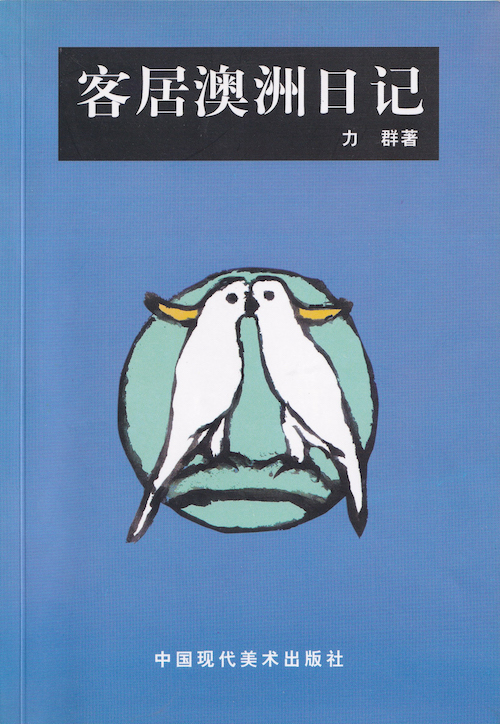
In December 1994, Li Qun embarked on a five-month journey to Australia, chronicling his experiences in “Diary of living in Australia.” Through daily entries, he contrasts the climate, environment, and cultural interests of Australia with the mainland. Sydney’s wildlife, especially the playful parrots, captivated him, as shared in his letter
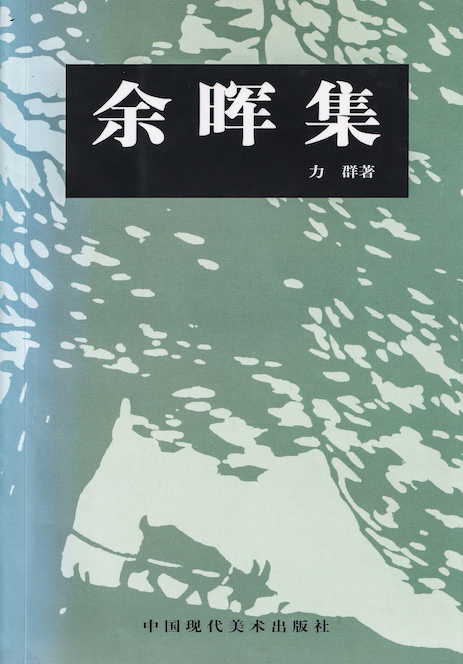
The “Afterglow Collection” signifies the culmination of Li Qun’s literary journey following the “Sunset Collection”. Within its 34 articles, each holds significance. Particularly noteworthy is “The Eternal Navigation Lighthouse,” detailing the “Yan’an Forum on Literature and Art” exploring its historical impact and contemporary interpretation. “My Creative Path” delves into personal
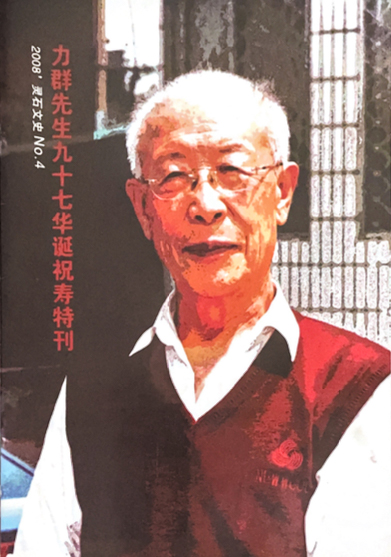
Congratulations – To Mr. Li Qun, a renowned Chinese printmaker, writer, literary critic, and local luminary. Respected Mr. Li Qun: Today marks your 97th birthday. First and foremost, please allow us, on behalf of the Ling Shi County Committee, Government, People’s Congress, Political Consultative Conference, and all 240,000 residents of
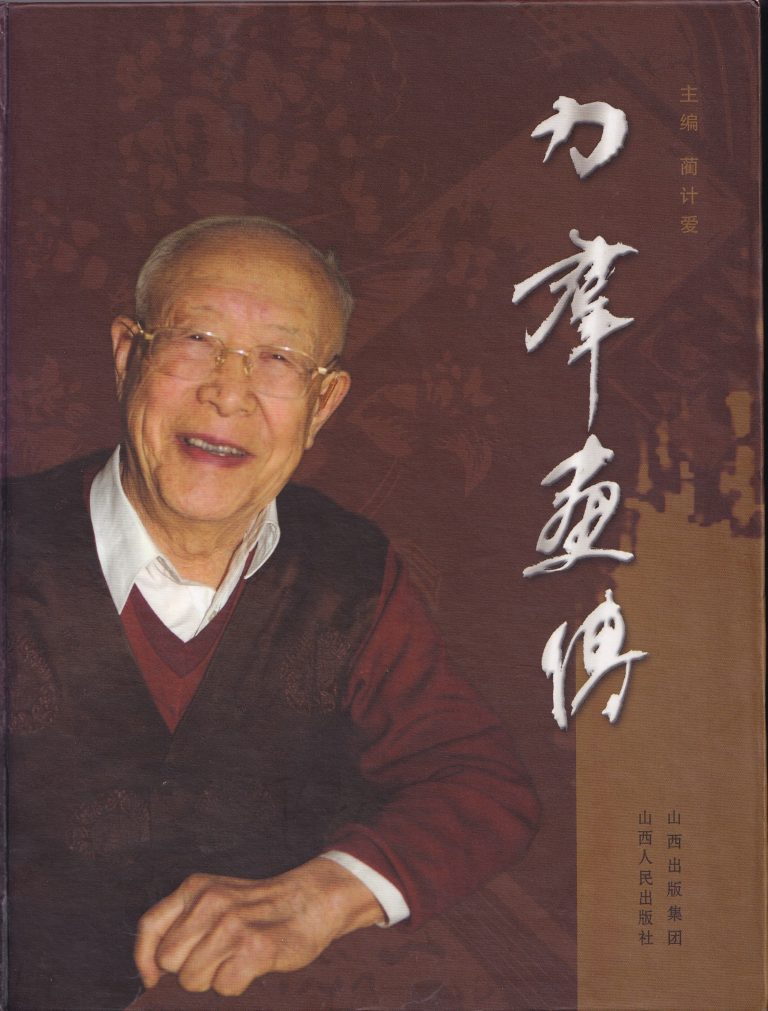
The forthcoming “Picture Biography of Li Qun” provides an in-depth look into the life and artistic journey of this revered figure. From his humble beginnings in Shanxi to becoming a pioneering force in China’s woodcuts and printmaking movement. Li Qun’s unwavering commitment to his craft endured personal and political challenges.
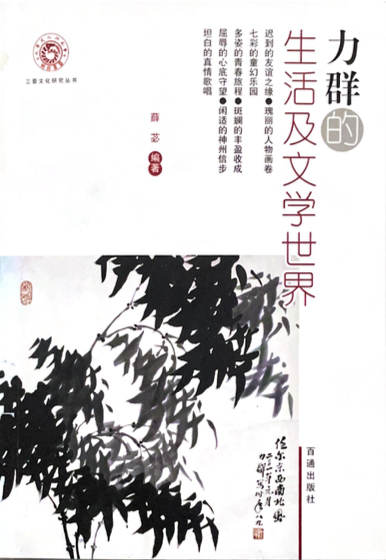
Li Qun, in my view, is a remarkable figure of his generation. Decades ago, I came across his woodblock prints in the “Jin Sui Daily,” and they truly captivated me. He had connections with the cultural giant of China, Mr. Lu Xun, as early as the 1930s. He was the
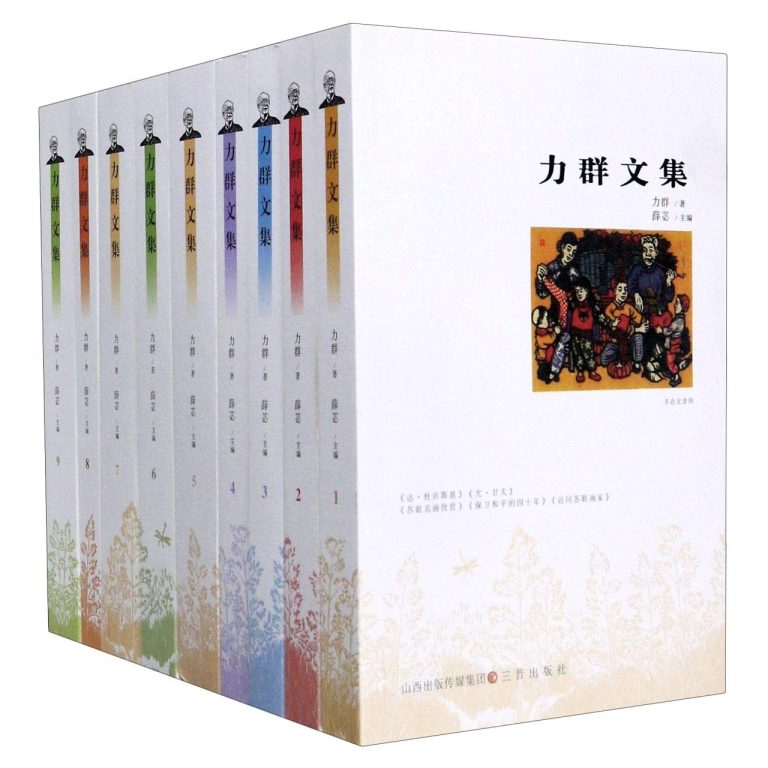
“The Complete Works of Li Qun” is a comprehensive nine-volume collection that showcases Mr. Li Qun’s dedication and creative accomplishments across various fields such as woodcut paintings, essays, novels, and literary critiques. Each volume stands as a complete entity, offering readers a glimpse into Mr. Li Qun’s artistic evolution from
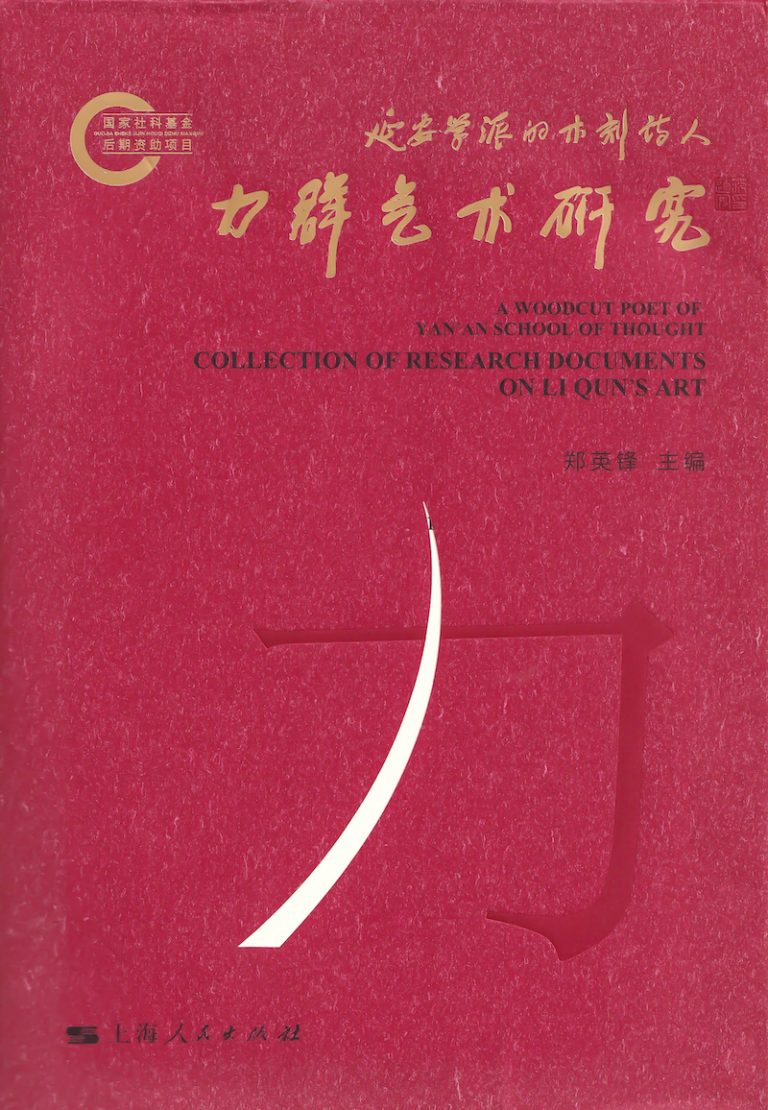
Li Qun is a prominent figure in the emerging woodcut printmaking movement in China and embodies the poetical spirit of the “Yan’an School.” He has had a significant influence on the development of modern printmaking in China. From a young age, he dedicated his art to the great cause of
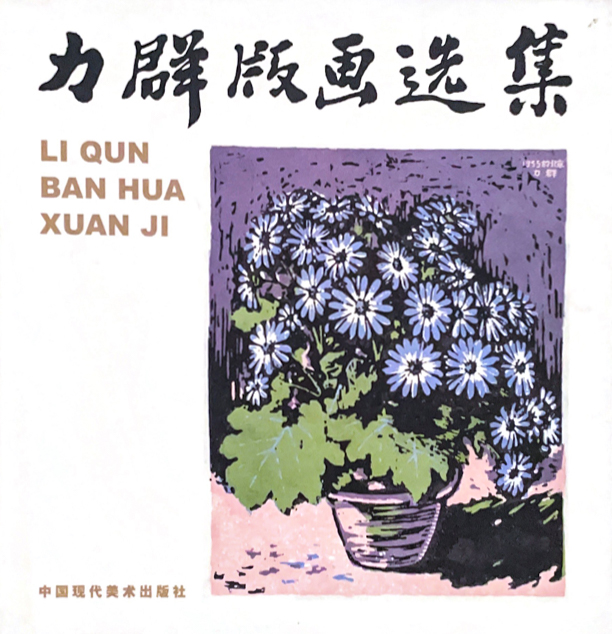
The text discusses an art exhibition held by Comrade Li Qun in Beijing’s Beihai Park, showcasing 26 pieces of his work, mostly new except for those from 1941. Despite facing challenges during various political movements over 39 years, Li Qun’s diligence shines through in his diverse and vibrant artworks. His
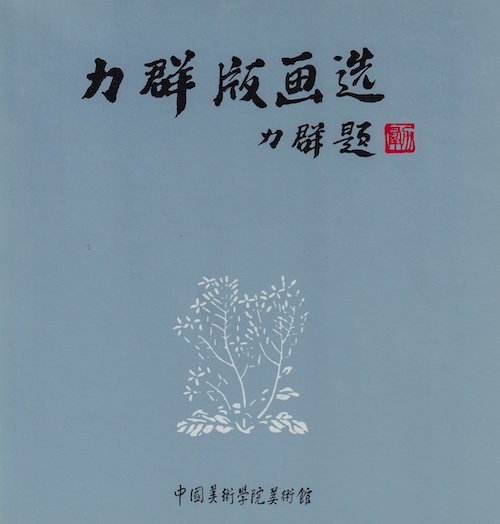
Li Qun, a native of Lingshi, Shanxi is a prominent figure in the realms of Chinese woodcuts and literary criticism. His artistic journey began at the National Hangzhou Art College (now the China Academy of Art) in 1931, a time when the influence of Lu Xun spurred a flourishing interest
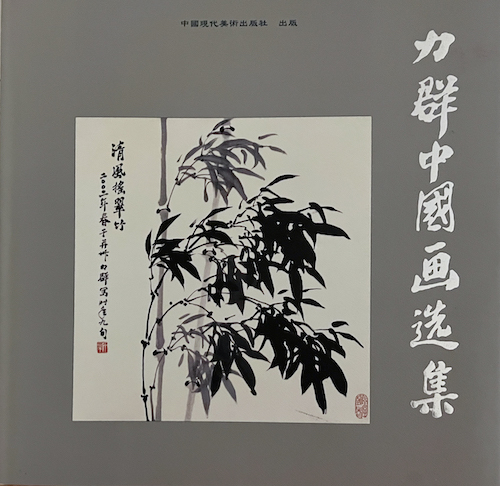
Li Qun, influenced by masters like Pan Tianshou and Li Kuchan, honed his Chinese painting skills at the National Hangzhou Art College. Combining this foundation with decades of printmaking experience, he crafts captivating works exhibited worldwide. His paintings, infused with spirit and form, resonate deeply, offering viewers a harmonious blend
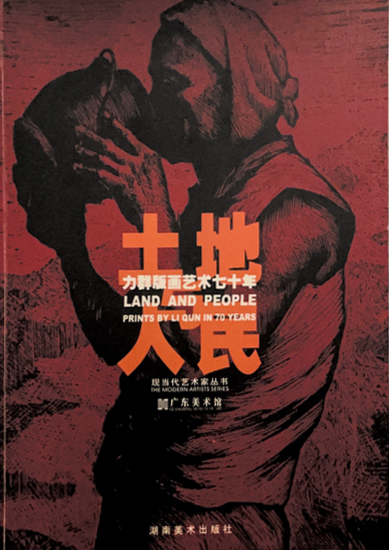
Li Qun emerges as a key figure, serving both as a witness and participant in the emerging art movement. Despite facing personal and societal challenges, Li Qun’s early works reflect influences from artists like Bouguereau and Mucha, as well as Soviet realism. Teaching at the Lu Xun Academy of Arts
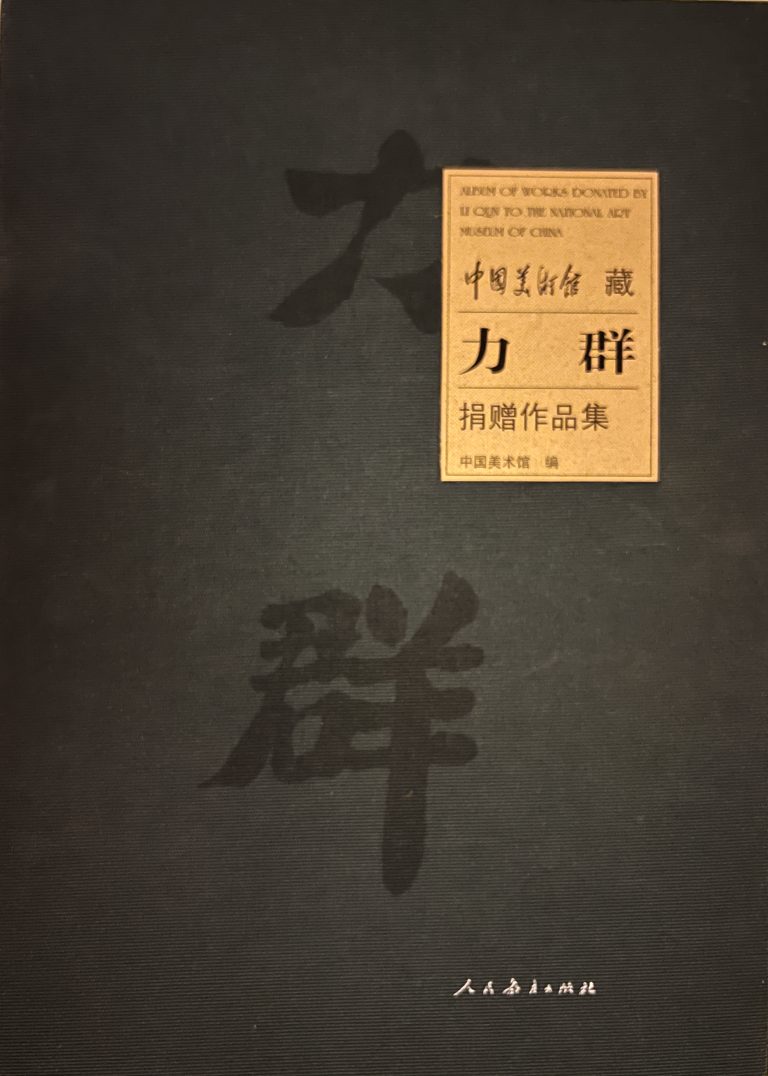
The “20th Century Special Incentive Scheme of National Art Collections and Donations” is a significant cultural initiative in China aimed at recognising artists’ contributions to 20th-century art. Started in 2004 under the Ministry of Culture’s leadership, it established the Shangguan Art Museum, praised by veteran artists who generously donated their
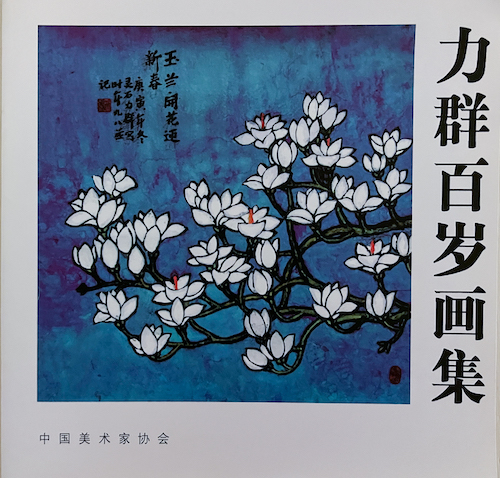
Titled “Li Qun’s 100-Year-Old Painting Collection,” this anthology celebrates the artist’s journey in Chinese painting, coinciding with his 99th birthday in December 2011. Tracing back to his education at the National Hangzhou Art College under revered mentors Pan Tianshou and Li Kutan, Li Qun initially pursued woodcarving. However, as age
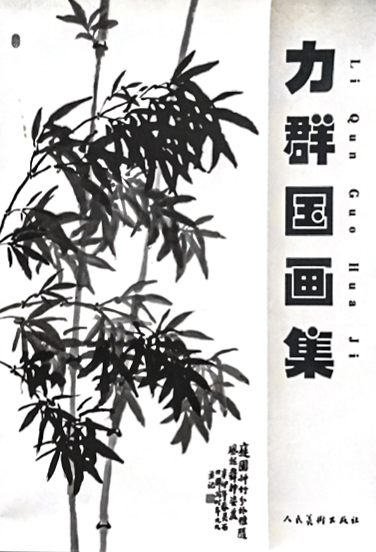
Mr. Li Qun, a respected figure in the Chinese art world, has been known nationwide for decades. Due to my love for art, I had the privilege of meeting him years ago. Despite the distance, our connection remained strong. In 2004, Mr. Li invited me to his solo exhibition, showcasing
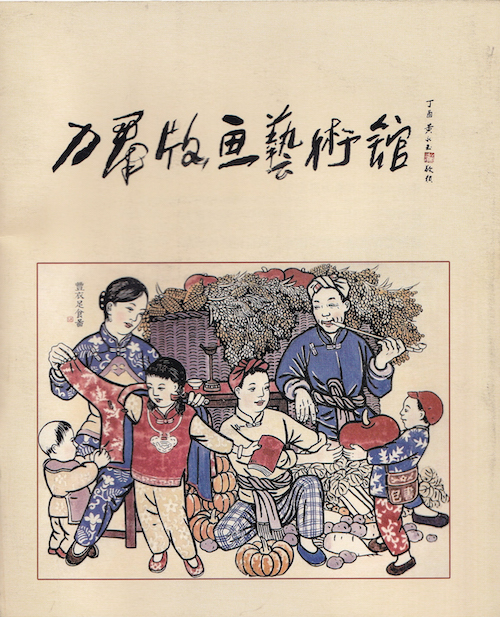
A collection of works donated to the Taiyuan Art Museum with the support of Li Qun’s family. The Li Qun Woodcuts Art Museum serves as a hub for collecting, preserving, and promoting his legacy. Located in Exhibition Hall 7 on the third floor of the Taiyuan Art Museum, the museum
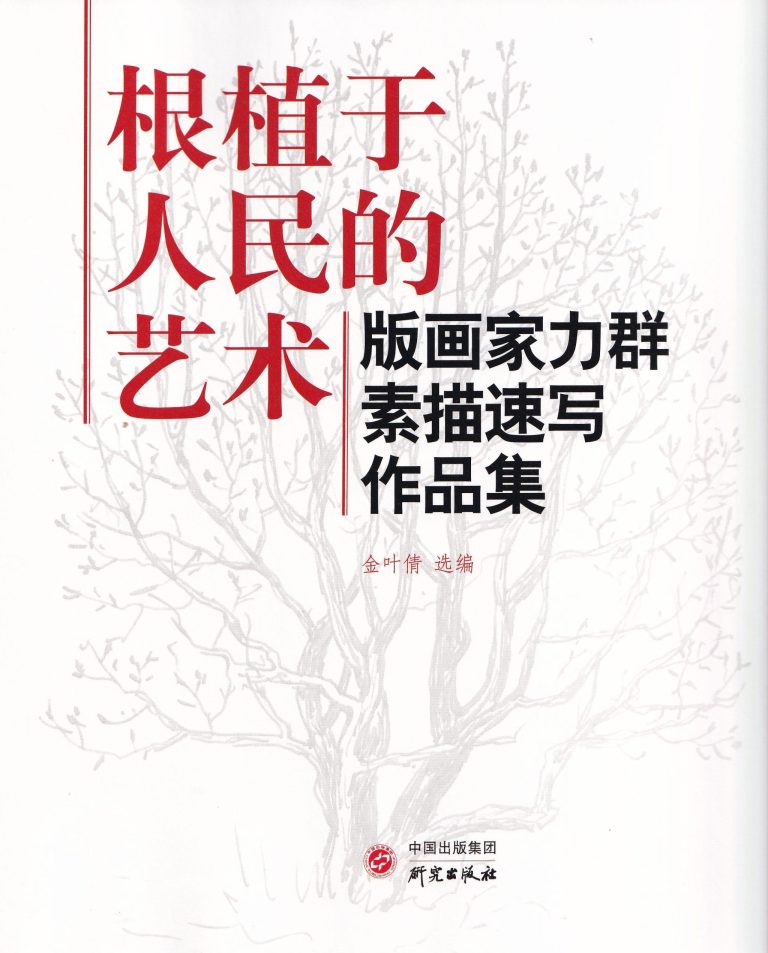
Mr. Li Qun, renowned for his woodcuts printmaking, left behind a collection of sketches that offer profound insights into his artistic journey. These sketches, discovered after his passing, span various subjects and scenes, reflecting the artist’s emotions and serving as source material. Despite their simplicity, they resonate deeply with viewers.
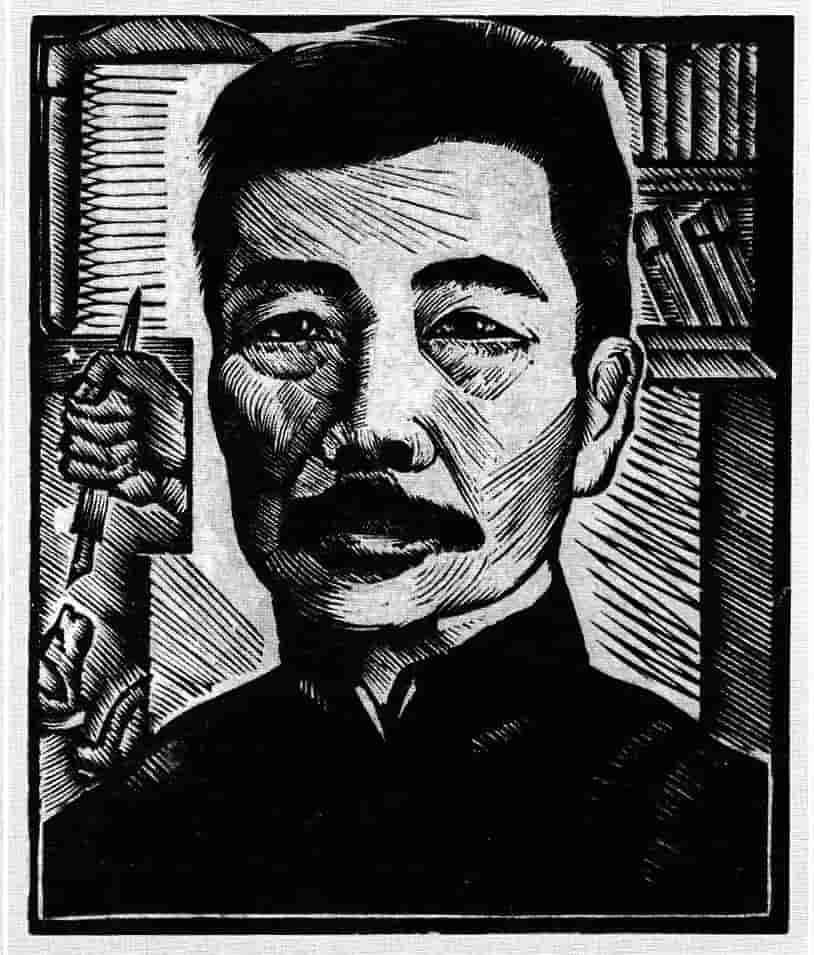
A comprehensive exploration of Li Qun Woodcuts spanning a remarkable 100-year chronicle that meticulously documents the life and career of this esteemed artist.
Gain insight into key events that shaped Li Qun’s trajectory, from his formative years in early 20th-century China to his influential presence in contemporary art. Discover the evolution of Li Qun’s craft as it intersects with major historical milestones, such as China’s Japanese invasion, Cultural Revolution and the modernisation era.
This chronicle provides a factual and detailed account of Li Qun’s journey, offering a unique lens into the socio-political landscape that has shaped both Li Qun and his iconic woodcut creations. Delve into the specifics of his chronicles to uncover the factual intricacies of a century-long artistic legacy.
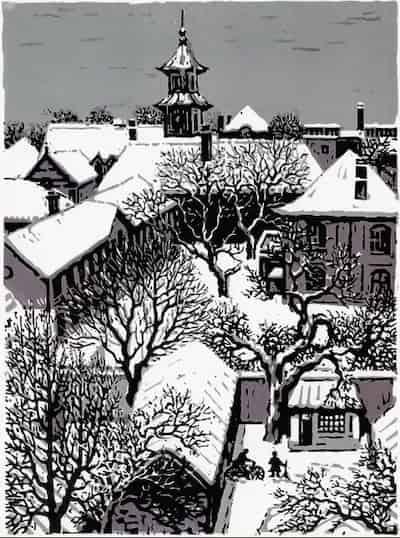
We offer a range of services from sourcing Li Qun’s art for purchase, but more importantly documenting artworks in public collections globally.
If you have Li Qun’s art work, we would like to keep a record of your collection. this is to help the future validations of Li Qun’s art work.
We are committed to facilitating a comprehensive understanding of Li Qun’s artistic legacy. While our services do not include artwork verification, we do have established contacts that may assist in this regard, subject to potential costs.
This website is managed by Li Qun’s family to preserve his legacy, and to connect with curators, historians, collectors, artists, fans and admires across the globe.
contact@liqunwoodcuts.org